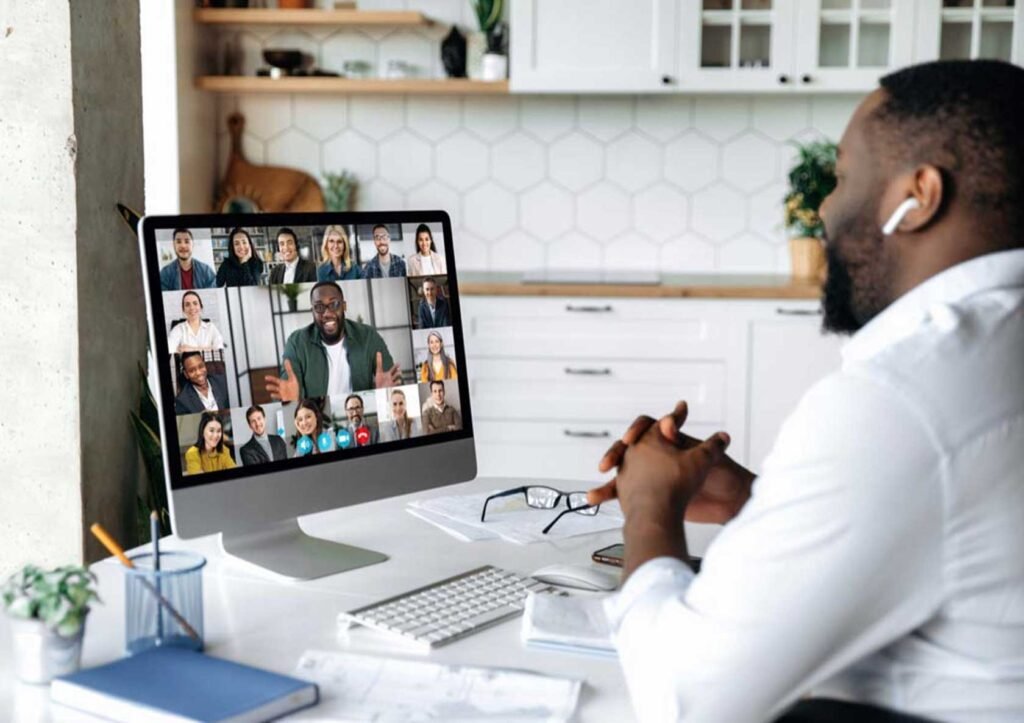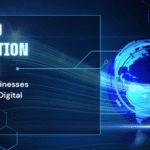Remote work is here to stay, but the office is reinventing itself as a collaborative hub. For most organizations, a hybrid model is the sustainable future, shaped by AI impact on remote work, generational shifts, and changing real estate dynamics.
The rise of remote work has transformed how businesses operate and how employees view jobs. The office is not dead, but it no longer holds the same power it once did. Instead, the future lies in hybrid as equilibrium—a balance where some industries thrive remotely while others rely on in-person work.
Introduction: The Shift No One Expected
The rise of remote work has reshaped the way people think about jobs, offices, and productivity. For decades, the office was the heart of business culture, but technology, shifting values, and the global pandemic showed that physical buildings are not the only way to run companies. Workers discovered flexibility, businesses saw cost savings (commuting, sick days), and families adapted to a new rhythm. Yet, the debate continues: is the office truly dead, or is the return to office (RTO) just the next chapter?
This transformation is more than a passing trend—it is a generational shift (Boomers vs Gen X) combined with technology’s power to connect people across time zones. The pendulum swinging back and forth (remote ↔ office) shows that work is not static. Instead, it is an ongoing experiment, balancing employee needs with organizational goals.
The Rise of Remote Work Explained
The rise of remote work began with necessity during the pandemic, but it turned into a choice once the benefits became clear. Companies that once doubted whether employees could be trusted outside the office saw productivity, creativity, culture, trust issues resolved through technology and strong leadership. The office-centric mindset cracked open, showing a different way of working.
For workers, this shift provided more control over daily schedules, improved work-life balance, and reduced expenses. The ability to avoid long commutes gave people back hours of their lives. Businesses also realized that cost savings (commuting, sick days) added up quickly, and they could attract global talent by offering flexibility.
Hybrid Work: A New Equilibrium
The conversation today is less about total remote versus full return to office (RTO). Instead, hybrid is likely future; some industries benefit, some don’t. Many organizations now operate in a model where employees spend part of the week in the office and part working remotely. This balance represents hybrid as equilibrium, giving people the best of both worlds.
However, hybrid is not without challenges. Leaders must design smart implementation (phased, communication, listening) to ensure the office does not become a place where remote workers feel excluded. Done poorly, hybrid creates two classes of employees: those seen and those forgotten. Done right, it fosters inclusion, connection, and efficiency.
The Office Debate: Dead or Alive?
Is the office dead? Not entirely. Real estate data shows real estate investments driving RTO, as landlords and investors lobby for a revival of office culture. Cities depend on workers filling downtown areas, spending money, and using services. The economic ripple effect of empty offices is too significant to ignore.
Still, offices are changing. They are no longer rows of cubicles but instead collaborative hubs designed for meetings, brainstorming, and social connection. Companies that see the office as a flexible tool instead of a mandate are better prepared for this future.
Generational Perspectives on Work
A generational shift (Boomers vs Gen X) is shaping workplace debates. Baby Boomers and some Gen X leaders often value in-person work because it reflects their careers’ structure. Millennials and Gen Z, however, entered the workforce when remote and hybrid models became mainstream, and they see no reason to revert to the old way.
This cultural divide fuels tension. Leaders frame the return to office (RTO) as necessary for career development, mentorship, and innovation. Younger workers argue that trust and output matter more than physical presence. The future of work lies somewhere between these viewpoints.
Remote Work and Mental Health
Remote work has deep effects on mental health, isolation, structure, career development. For some, being home improves focus and reduces stress. For others, it increases loneliness and creates WFH fatigue, preference for occasional in-office days to regain balance.
A table illustrates these contrasts:
| Benefit of Remote Work | Challenge of Remote Work |
| More work-life balance | Feelings of isolation |
| Saved commuting time | Lack of structure |
| Flexibility for families | Career visibility concerns |
| Global job access | Risk of burnout |
This dual reality is why companies adopt flexible strategies rather than rigid rules.
AI and Its Role in Remote Work
The AI impact on remote work is growing. Tools powered by artificial intelligence help automate tasks, monitor productivity, and even simulate in-office collaboration. From AI scheduling to virtual assistants, technology is the bridge between distance and connection.
However, there are trust issues. Some employees worry that monitoring tools invade privacy, while others fear that automation may lead to layoffs, talent war, employee retention, flexibility debates. Smart leaders will use AI to support employees, not replace them.
The Problem of Abused Remote Work
Not every remote model has succeeded. In some cases, remote work abused by few, affects perception for the majority. Stories of employees working multiple jobs or disappearing during work hours fuel doubts about trust and commitment.
This perception drives some companies to push harder for return to office (RTO) mandates. Yet, blanket policies risk losing good employees. The key is balance: smart implementation (phased, communication, listening) ensures fairness without punishing the whole workforce.
Housing, Relocation, and Affordability
Remote work reshaped where people live. Many left expensive cities because remote enables affordability relocation, housing impacts. Smaller towns and suburbs saw growth as workers sought better quality of life. Housing markets shifted, with rising prices in areas previously overlooked.
Still, when companies demand return to office (RTO), workers who relocated face challenges. Do they move back? Do they quit? This tug-of-war highlights the broader economic impact of work policies.
Productivity and Trust in Remote Teams
Managers long feared that remote work would reduce productivity, creativity, culture, trust issues. The opposite happened for many: employees worked longer hours, delivered results, and showed resilience. But sustaining this requires clear communication and trust.
Without trust, leaders may fall into micromanagement. With trust, remote and hybrid teams thrive. The pendulum swinging back and forth (remote ↔ office) shows that trust is central to whichever model companies choose.
Corporate Mandates and Talent Drain
When CEOs enforce strict return to office (RTO) mandates, they risk a talent drain. Skilled workers, especially in-demand tech workers, prefer flexibility. If one company forces a rigid office culture, another company offering flexibility will attract the talent.
This competition drives the talent war. Companies that prioritize trust, autonomy, and results keep employees loyal. Those that ignore these realities may see layoffs combined with reduced employee engagement.
Redesigning Offices for a New Era
Modern offices are not about presence—they are about purpose. Instead of cubicles, companies design spaces for collaboration, mentoring, and social bonding. This flexible redesign makes the office a resource, not a burden.
A table highlights differences:
| Old Office Model | New Office Model |
| Cubicles & private desks | Open, collaborative zones |
| Daily attendance required | Hybrid attendance optional |
| Status tied to presence | Status tied to output |
| Meetings in person only | Meetings hybrid-enabled |
These changes prove that the office is evolving, not disappearing.
Work-Life Balance and Career Development
One of the greatest gifts of the rise of remote work is stronger work-life balance. Parents attend school events, employees save hours on commuting, and sick days are less disruptive. This human-centered approach improves morale.
Yet, there is concern about career development. Without regular office presence, some workers worry they may miss promotions or mentorship. Companies must address this with structured hybrid programs that allow both flexibility and visibility.
Smart Implementation Strategies
Leaders cannot impose change without strategy. Smart implementation (phased, communication, listening) ensures smoother transitions. Phased rollouts help workers adapt, open communication reduces resistance, and listening to feedback builds trust.
Some companies use bullet-pointed practices to succeed:
- Set clear expectations early
- Invest in collaboration tools
- Offer mental health support
- Ensure equal treatment for remote and in-office staff
- Regularly measure employee satisfaction
These steps make hybrid and remote more sustainable.
Future Outlook: Office Dead or Reinvented?
The rise of remote work shows that offices are not dead—they are reinvented. For some industries, remote work is the future. For others, hybrid models remain necessary. The pendulum swinging back and forth (remote ↔ office) will continue as technology, economics, and culture evolve.
The real answer lies in flexibility. Companies that cling to old office-centric views risk falling behind, while those embracing a balanced model will lead the way. The office may not be dead, but it is no longer the ruler of work.
Conclusion: The New World of Work
The rise of remote work is more than a trend—it is a lasting transformation. The office is not gone but reimagined, serving collaboration instead of control. With AI impact on remote work, generational shifts, and demands for work-life balance, the future is hybrid. Some industries will thrive fully remote, others will need the office, but flexibility will guide success.
FAQs
1. Is the office really dead?
No, but it has changed. Offices now focus on collaboration and culture rather than daily attendance.
2. Why do some companies demand RTO?
Economic pressures and concerns about productivity push leaders toward return-to-office mandates.
3. What role does AI play in remote work?
AI supports productivity, communication, and automation but raises trust and privacy concerns.
4. How does remote work affect housing?
Remote enables affordability relocation, creating housing impacts in suburban and rural areas.
5. Does remote work harm career growth?
Not if companies build hybrid models that include visibility and mentorship opportunities.
6. Why is hybrid considered the future?
Hybrid as equilibrium balances flexibility with connection, fitting most industries better than extremes.
7. What are the biggest mental health issues with remote work?
Isolation, lack of structure, and WFH fatigue are the most common.
8. How do companies prevent abuse of remote work?
Clear expectations, trust, and accountability systems prevent misuse without punishing all employees.
9. Can remote work save money for businesses?
Yes, it reduces costs like commuting reimbursements, office space, and sick days.
10. What industries benefit most from remote work?
Tech, design, writing, and other knowledge-based industries benefit, while manufacturing and healthcare rely more on in-person work.


